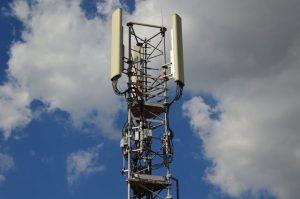Orbiting Innovations: Key Updates in Satellite Telecommunications Technology
The satellite telecommunications industry is experiencing a surge in innovation, with advancements in technology and infrastructure. This article explores the key updates in satellite telecommunications technology, including the development of new satellite constellations, improvements in antenna design, and the increasing use of artificial intelligence.

Orbiting Innovations: Key Updates in Satellite Telecommunications Technology
Orbiting Innovations: Key Updates in Satellite Telecommunications Technology is a rapidly evolving field, with new advancements and innovations emerging regularly. The satellite telecommunications industry is experiencing a surge in innovation, with advancements in technology and infrastructure. One of the key drivers of this innovation is the development of new satellite constellations, which are enabling faster, more reliable, and more secure communication services.
The development of new satellite constellations is a significant update in satellite telecommunications technology. Companies such as SpaceX, Amazon, and OneWeb are launching thousands of small satellites into low Earth orbit, providing global coverage and enabling a wide range of applications, including broadband internet, mobile communications, and Earth observation. These constellations are designed to provide high-speed, low-latency communication services, making them ideal for applications such as online gaming, video streaming, and virtual reality.
Advances in Antenna Design
Another key update in satellite telecommunications technology is the advancement in antenna design. Traditional satellite antennas are large, heavy, and expensive, making them difficult to deploy and maintain. However, new antenna designs, such as phased arrays and mesh antennas, are smaller, lighter, and more affordable, making them ideal for use in satellite constellations. These antennas are also more efficient, providing higher gain and better beamforming capabilities, which enables them to support multiple beams and frequencies.
The increasing use of artificial intelligence (AI) is also a significant update in satellite telecommunications technology. AI is being used to optimize satellite operations, including orbit determination, station-keeping, and collision avoidance. AI is also being used to analyze large amounts of data generated by satellites, providing insights into weather patterns, crop health, and other environmental factors. Additionally, AI is being used to improve the security of satellite communications, detecting and mitigating cyber threats in real-time.
Increasing Use of Artificial Intelligence
The use of AI in satellite telecommunications is not limited to operational optimization and data analysis. AI is also being used to improve the performance of satellite communications systems, including the development of more efficient modulation and coding schemes, and the optimization of beamforming and power allocation. AI is also being used to enable new applications, such as satellite-based IoT (Internet of Things) and satellite-based 5G networks.
Another key update in satellite telecommunications technology is the development of new propulsion systems. Traditional satellite propulsion systems are based on chemical propulsion, which is heavy, expensive, and inefficient. However, new propulsion systems, such as electric propulsion and advanced ion engines, are more efficient, providing longer mission durations and more precise orbit control. These propulsion systems are also more environmentally friendly, reducing the amount of waste and debris in space.
New Propulsion Systems
The development of new propulsion systems is a significant update in satellite telecommunications technology. Companies such as SpaceX and Blue Origin are developing new propulsion systems, including reusable rockets and advanced ion engines. These propulsion systems are designed to provide more efficient and cost-effective access to space, enabling the launch of larger and more complex satellites. Additionally, these propulsion systems are more reliable, providing higher mission success rates and reducing the risk of launch failures.
In conclusion, the satellite telecommunications industry is experiencing a surge in innovation, with advancements in technology and infrastructure. The development of new satellite constellations, advances in antenna design, the increasing use of artificial intelligence, and the development of new propulsion systems are just a few of the key updates in satellite telecommunications technology. These innovations are enabling faster, more reliable, and more secure communication services, making them ideal for a wide range of applications, including broadband internet, mobile communications, and Earth observation.


